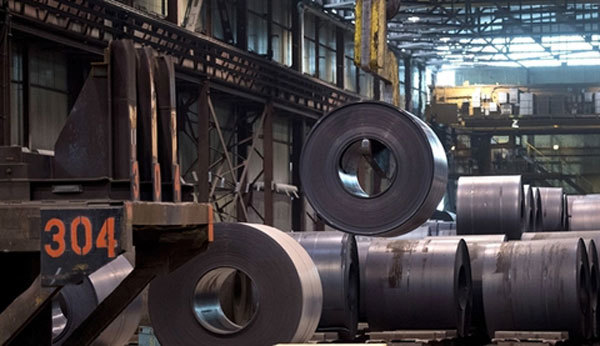 |
| Vietnam's steel producers must improve their production technology to meet the EU standards for steel products exported to this market. — Photo tapchicongthuong.vn |
Trinh Nguyen Khoi, vice chairman of the Viet Nam Steel Association, said to enter the European market, steel products must meet strict standards that force local manufacturers to change their production processes and business practices.
Besides that, according to the association, the EU market accounts for about 4.2 per cent of Vietnam's total steel exports. Meanwhile, traditional markets such as ASEAN and China account for a large proportion, nearly 55 per cent and 19 per cent, respectively.
“Consumption growth of Vietnam's steel products in the European market has not been high as in emerging markets such as China or other developing countries,” Khoi told the Vietnam News Agency.
“Despite having advantages in export to the EU according to the EVFTA, Vietnam’s steel products still have to compete with steel products made by countries having developed steel industry such as China, Japan and South Korea,” Khoi said.
Doan Danh Tuan, Toan Thang Steel Trading Co, Ltd’s chairman of the management board, said the challenge for local steel products in accessing the EU market is strict quality standards. Therefore, local businesses must improve production technology to meet their standards.
The EU also has strict requirements on the origin of goods so the domestic enterprises must have transparency in the origin of products, he said.
To grasp export opportunities from EVFTA, some experts on the domestic steel industry said an important solution is to promote market research and forecast, including trends of supply, demand and prices as well as the ability to apply technical barriers to trade activities in the EU market.
The State should provide early warnings about technical barriers for enterprises in the value chain of producing Vietnamese export goods to local export firms to overcome technical barriers.
Nguyen Van Sua, the former vice-chairman of the Vietnam Steel Association, said amid high competition and the COVID-19 pandemic, Vietnam’s steel exports to the EU market have reduced. The trend of applying trade remedies continues to maintain, making it difficult to expand export markets.
Meanwhile, besides meeting technical, quality and origin requirements, local enterprises need to pay more attention to the provisions of trade defence in each free trade agreement (FTA) to reduce unnecessary damage in trade defence lawsuits, Sua said.
A representative of the Hoa Sen Group said in the first half of June, Hoa Sen exported 35,000 tonnes of galvanised steel sheet to the European market. Up to now, this is the largest such shipment from a Vietnamese company to the European market.
However, the representative said, to export those to this market, the group has built a long-term investment strategy for research and development of products to improve technology production and product quality, reported Sai gon giai phong (Sai Gon Liberation) newspaper. In addition, it has upgraded its distribution activities to ensure timely delivery to customers in Europe.
Many other steel enterprises such as Hoa Phat, Toan Thang, Ton Dong A Corporation and Nam Kim Steel are improving quality of products and services to meet ISO 9001.2015 standard that is the basic standard for sustainable exports of Vietnamese steel products to the European market. VNS

Vietnamese goods face tough road to foreign markets due to trade remedies
With an array of free trade agreements (FTAs) inked and coming into force, countries around the world have also increased technical barriers to protect their domestic industries,

EU deal to force blanket progress
The EU-Vietnam Free Trade Agreement has been adopted by the European Parliament and is now awaiting approval from the European Council and Vietnam’s National Assembly.